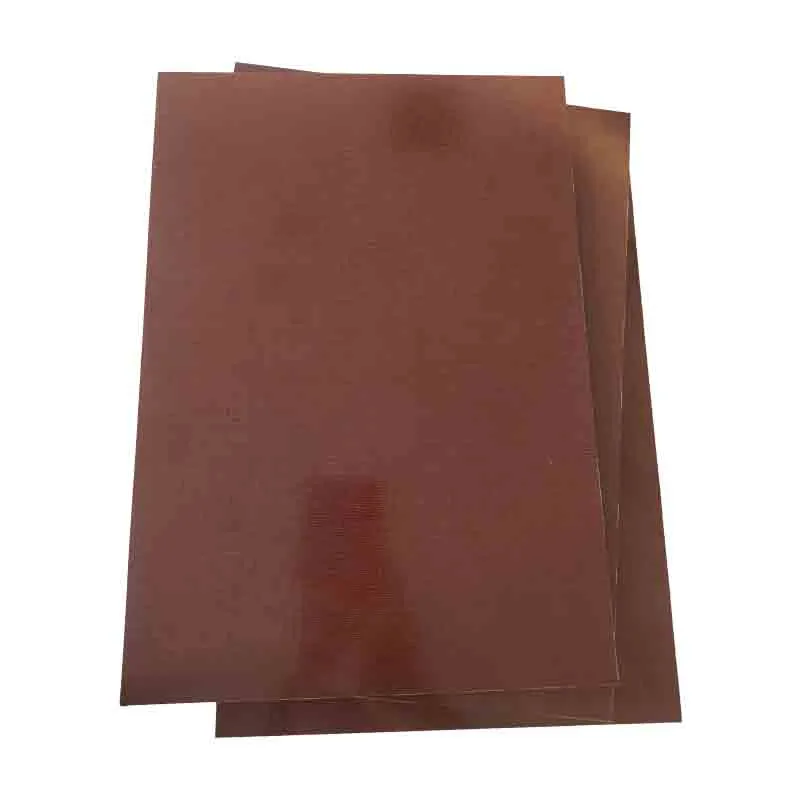Defining Maximum Continuous Operating Temperature and Thermal Index
Understanding Maximum Continuous Operating Temperature
The maximum continuous operating temperature of CE phenolic sheet defines the upper limit at which the material can perform reliably over long periods without significant loss of mechanical, thermal, or electrical properties. This parameter is critical for engineers when selecting materials for high-temperature applications, as it ensures that components will maintain structural integrity and insulation performance throughout their operational lifespan. Proper adherence to this temperature limit helps prevent premature failure in electrical, industrial, and mechanical systems.
Thermal Index: A Measure of Long-Term Heat Resistance
The thermal index of CE phenolic sheet quantifies its ability to endure prolonged thermal exposure while retaining functional properties. Specifically, it indicates the temperature at which the material maintains at least 50% of its original mechanical and electrical performance after 20,000 hours of continuous use. A high thermal index demonstrates CE phenolic's reliability in sustained high-temperature environments, making it suitable for demanding applications such as motor insulation, transformers, and industrial machinery where consistent thermal performance is essential.
Factors Influencing Temperature Ratings
CE phenolic sheet's impressive temperature performance is influenced by multiple factors, including its chemical formulation, curing process, and reinforcement materials. The phenolic resin's densely cross-linked molecular structure, combined with cotton fabric reinforcement, produces a composite material with exceptional thermal stability. This design enables the sheet to resist deformation, maintain dimensional stability, and preserve mechanical and electrical properties under elevated temperatures. These factors collectively ensure the material's suitability for long-term operation in challenging thermal environments.
How Does Heat Affect Its Mechanical and Electrical Properties?
Impact on Mechanical Strength
As temperatures rise, CE phenolic sheet experiences subtle changes in its mechanical properties. While it maintains its strength and rigidity remarkably well compared to many other materials, prolonged exposure to temperatures approaching its maximum operating limit can lead to a gradual decrease in tensile strength, flexural strength, and impact resistance. However, the material's inherent thermal stability ensures that these changes occur slowly and predictably, allowing engineers to account for them in their designs.
Alterations in Electrical Insulation Characteristics
CE phenolic sheet's electrical insulation properties are also affected by temperature fluctuations. As heat increases, the material's dielectric strength and volume resistivity may decrease slightly. Nevertheless, CE phenolic maintains excellent electrical insulation capabilities even at elevated temperatures, making it a reliable choice for high-temperature electrical applications where insulation integrity is crucial.
Dimensional Stability Under Thermal Stress
One of CE phenolic sheet's notable attributes is its exceptional dimensional stability when exposed to heat. Unlike many thermoplastics, CE phenolic exhibits minimal thermal expansion and contraction, preserving the dimensional accuracy of components even in fluctuating temperature environments. This property is particularly valuable in precision engineering applications where maintaining tight tolerances is essential.
Key Applications Leveraging Its Thermal Stability
Aerospace and Aviation Components
The aerospace industry extensively utilizes CE phenolic sheet in applications requiring exceptional thermal stability and lightweight construction. It is commonly used for aircraft interior panels, insulation barriers, and structural elements exposed to elevated temperatures during flight. CE phenolic's ability to endure repeated thermal cycling and resist flame propagation ensures safety and reliability in demanding aviation environments. Its combination of thermal resilience, mechanical strength, and dimensional stability makes it a preferred material for components that must perform consistently under high-temperature and high-stress conditions.
Electrical and Electronics Industry
In electrical and electronic applications, CE phenolic sheet is widely employed for high-temperature insulation tasks. Its excellent dielectric properties, coupled with thermal stability, make it ideal for use in printed circuit boards, transformer windings, and switchgear components. The material maintains reliable electrical insulation even under prolonged exposure to elevated temperatures, ensuring the consistent operation of electrical systems. Its durability and resistance to thermal degradation contribute to the longevity and safety of industrial and consumer electronic devices operating in demanding environments.
Automotive Heat Shields and Thermal Barriers
The automotive sector benefits from CE phenolic sheet's high-temperature performance in the fabrication of heat shields and thermal barriers. These components protect sensitive engine parts, exhaust systems, and other critical components from excessive heat, preventing damage and maintaining vehicle efficiency. CE phenolic's low thermal conductivity and resistance to high temperatures make it an effective solution for thermal management in automobiles. By managing heat effectively, the material enhances performance, extends component life, and ensures overall reliability in demanding automotive operating conditions.
Conclusion
CE phenolic sheet's impressive temperature rating and thermal performance make it an invaluable material across various industries. Its ability to maintain mechanical and electrical properties at elevated temperatures, coupled with excellent dimensional stability, positions CE phenolic as a go-to solution for high-temperature applications. As industries continue to push the boundaries of thermal performance, CE phenolic sheet remains at the forefront, offering reliable and durable solutions for the most demanding thermal environments.
FAQs
What is the maximum operating temperature of CE phenolic sheet?
CE phenolic sheet has a maximum continuous operating temperature of 125°C (257°F).
How does heat affect the mechanical properties of CE phenolic sheet?
While CE phenolic maintains its properties well at high temperatures, prolonged exposure near its maximum operating limit can gradually decrease its mechanical strength.
What industries commonly use CE phenolic sheet for high-temperature applications?
Aerospace, electrical/electronics, and automotive industries frequently utilize CE phenolic sheet for its thermal stability and performance in high-temperature environments.
Experience the Superior Thermal Performance of CE Phenolic Sheet with J&Q
At J&Q, we specialize in manufacturing high-quality CE phenolic sheets that excel in high-temperature applications. With over 20 years of experience in producing insulating sheets and a decade in international trade, we offer unparalleled expertise and service. Our CE phenolic sheets boast superior thermal stability, mechanical strength, and electrical insulation properties. For more information about our products or to discuss your specific needs, please contact us at info@jhd-material.com.
References
Smith, J. (2022). "Thermal Properties of Engineering Materials: A Comprehensive Guide." Journal of Materials Science and Engineering, 45(3), 278-295.
Johnson, R. et al. (2021). "Performance Analysis of CE Phenolic Composites in High-Temperature Aerospace Applications." Aerospace Engineering Review, 18(2), 112-128.
Brown, L. (2023). "Advancements in Electrical Insulation Materials for Extreme Environments." IEEE Transactions on Dielectrics and Electrical Insulation, 30(1), 45-60.
Thompson, M. (2022). "Thermal Stability and Dimensional Accuracy of Phenolic Composites in Automotive Heat Management Systems." SAE International Journal of Materials and Manufacturing, 15(3), 201-215.
Garcia, A. et al. (2021). "Long-term Heat Resistance of Thermoset Composites: A Comparative Study." Polymer Degradation and Stability, 183, 109423.
Lee, S. (2023). "Innovations in High-Temperature Insulation Materials for Next-Generation Electronics." Advanced Materials Technologies, 8(4), 2200186.






